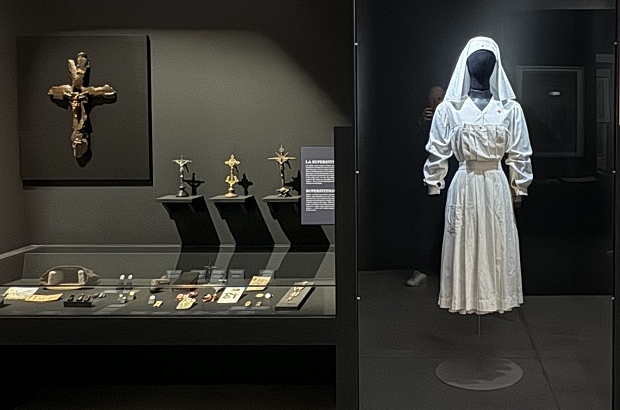- Daily & Weekly newsletters
- Buy & download The Bulletin
- Comment on our articles
‘Angels of Mons’ exhibition: From WWI legend to abiding war propaganda myth
Although Mons is famous for being the site of the first and last casualty of World War One, it was also the scene of one of the most enduring supernatural legends to arise from a battlefield.
In Les Anges de Mons. Beliefs and Apparitions in 14-18, the Mons Memorial Museum dedicates a detailed and illuminating exhibition to this myth as part of the commemorations of the 110th anniversary of the Battle of Mons.
Paintings, posters, books, objects, archives and memorabilia examine the historic, social and scientific context of the legend, curated by historians Annette Becker and Laurence van Ypersele as well as the museum’s curator Corentin Rousman.
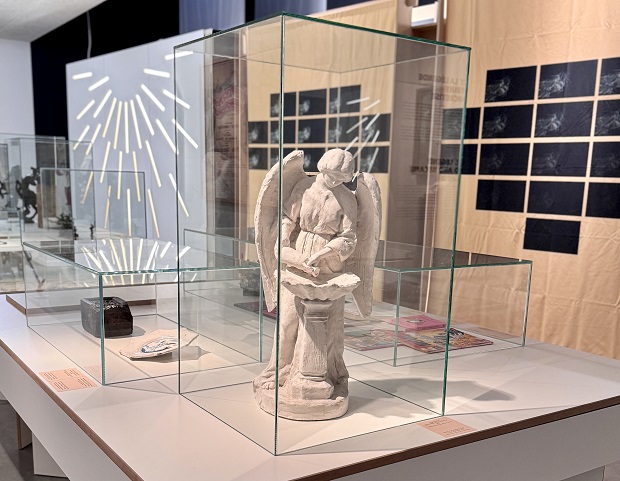
Beyond local and British history, the exhibition reveals how this overlooked episode of the great war tapped into long-standing mythology surrounding conflict, and its resonance today. It explores not only the neo-Gothic beliefs around spiritualism that thrived at the beginning of the 20th century, but also the intense propaganda that surrounded war culture.
Shortly after Britain declared war with Germany on 4 August 1914, some 70,000 troops of the British Expeditionary Forces (BEF) set off for southern Belgium. The first skirmish of the war occurred at Nimy bridge, near Mons, on 22 August, as the British attempted to hold a front line along the canal.
After heavy fighting with the German forces, who boasted 200,000 men and technically more advanced weaponry, they were forced to retreat. Still fighting, the exhausted British troops headed along a forested Roman road into France. In the sky, some saw an odd cloud formation appearing like an angel shooting arrows at their foe, which they interpreted as a supernatural intervention to protect them.
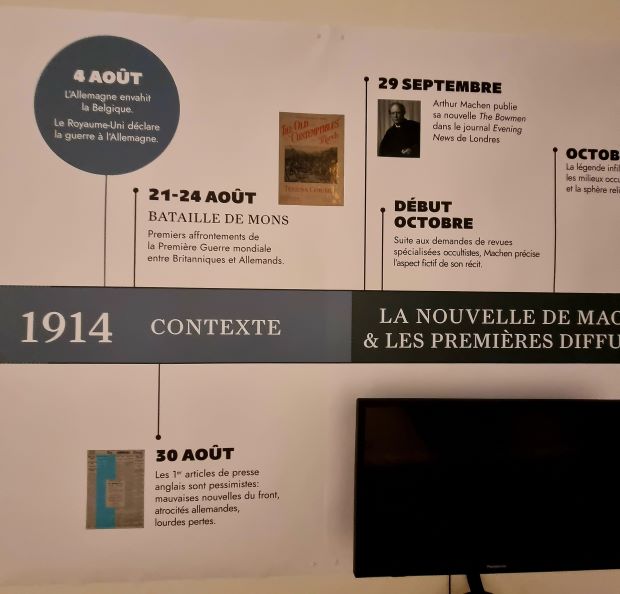
On their return home, where the retreat at the Battle of Mons was celebrated as a tactical victory, tales of the apparition were amplified, particularly by parish news reports. Artists were inspired to create works depicting the angel, including Welsh author Arthur Macken who first published a short story The Bowmen about phantom longbowmen from the Battle of Agincourt appealing to St George for help in defeating the Germans.
While Macken acknowledged in a later book, on display in the exhibition, that the tale was not authenticated, the rumour quickly became viral. An intricate and chronological timeline of the creation of the legend highlights its anchoring in popular culture, including Brigadier-General John Charteris' influential memoir. Despite various inconsistencies, it was fuelled by the church and the spiritualism of the age, spreading around countries of the former British empire.
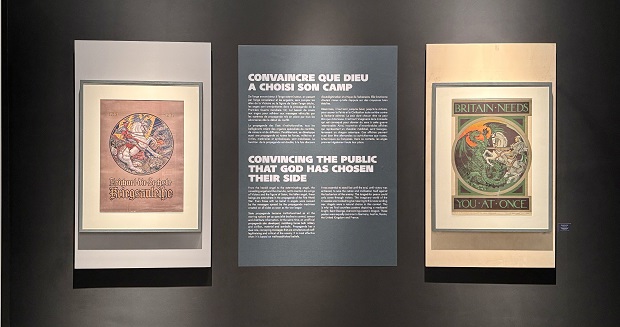
The legend served as a useful propaganda tool to encourage the population to continue to support the war, Rousman explains. "The objective is to say that we will be victorious... A way of also saying that the one who is on the side of Saint George supports the good war and justice.”
St George is not only the patron saint of Great Britan, he enjoys a cult following in Mons, which originates from the Middle Ages. Each year, during the Ducasse, St George slays the dragon in an elaborate folklore ceremony. Germans and Austrians equally appropriated the powerful image along with a panoply of angels, from fallen and exterminating to protecting and celestial archers.
While the Angels of Mons legend took flight in Britain, it was entirely unknown in the Hainaut capital, where the population had been occupied by the German army for the entirety of the war.
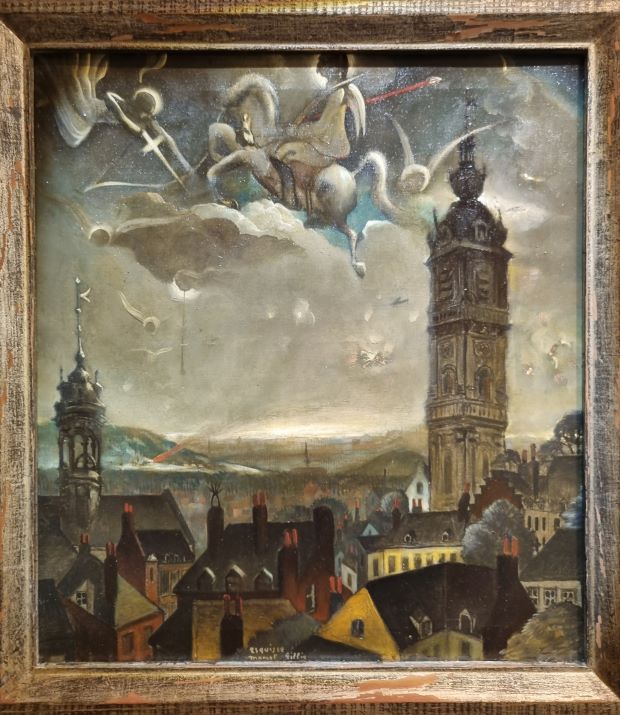
But as British regiments returned to the scene of the battlefields from the 1920s, the story grew local roots. Civil dignitaries, realising its potential as a tourist attraction, commissioned the painting St George and the Battle of the Angels (pictured) by Marcel Gillis. It graced the mayor’s office, where visiting British delegations were received. Relics of the war also surfaced as various detritus was gradually unearthed, including a collection of regimental drums, weapons, uniforms and helmets.
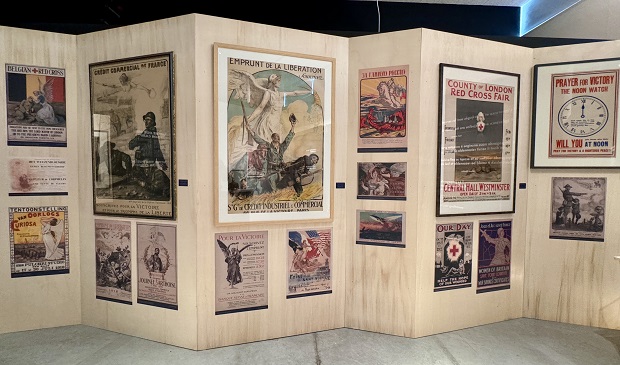
The myths and icons exploited by various European countries for propaganda purposes is illustrated by a collections of posters (pictured). The symbolic art form was the principle form of public communication at the time.
Angels in their incarnation of protector are explored in a section demonstrating how patriotism and religion fused to play an important role. On the battlefield, pastors were also present and soldiers counted bibles and various religious objects among their personal effects. From the museum’s own collection is a crucifix made by a soldier from papier mâché in response to the need for a protector during the conflict. A nurse’s uniform represents a physical incarnation of the Angel of Mons.
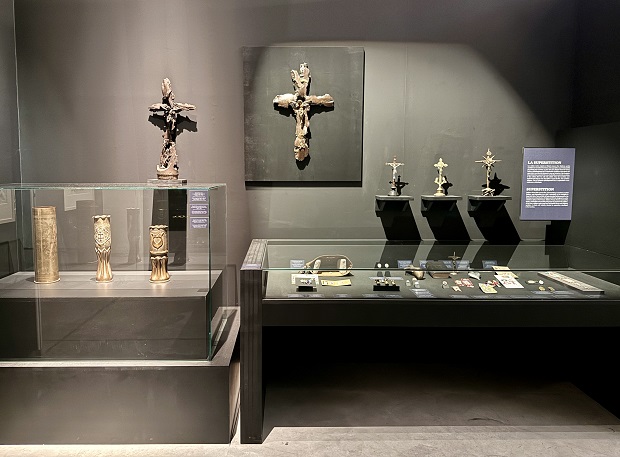
Superstition was also rife with soldiers fashioning artisan objects or buying medals, rings and other trinkets, including of St George, to accompany them throughout their ordeal. Such beliefs regularly surfaced during periods of difficulty such as war. “There is a parallel with Russia and Ukraine today with images of their soldiers praying before going into combat,” says Rousman, pointing out how the museum responds to a present-day situation by exhibiting a correlating historic one.
In a final space, visitors discover how the Angel of Mons has been represented in modern culture, from film and books to comic strip and album covers. Scenes from the US superhero series Wonder Woman are screened, in which the heroine is transformed into an angel as she crosses the no man’s land between British and German trenches. “It is not the story of the Angels of Mons, but it shows how it inspired Anglo-Saxon culture,” says Rousman.
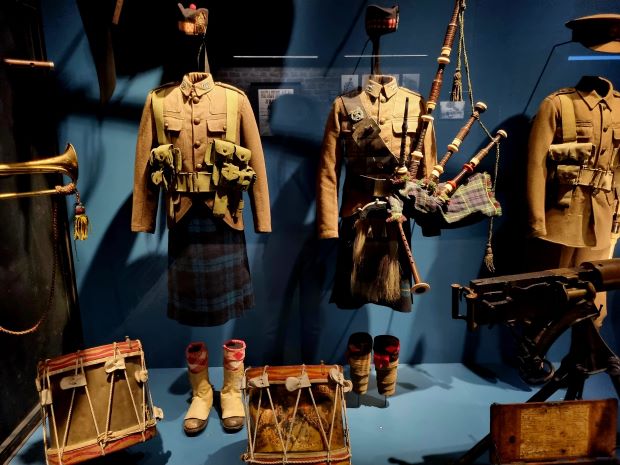
While highlighting the ongoing resonance of this mythical episode, the exhibition complements the museum’s permanent collections, which trace the military history of the Mons region from the Middle Ages to the 20th century. The highlight of its exhibits are from the Battle of Mons, treasured artefacts (pictured) that are testimony to both the impact of the short but strategic conflict that also claimed local citizens among its victims.
Les Anges de Mons. Beliefs and Apparitions in 14-18
Until May 2025
Mons Memorial Museum
Boulevard Dolez 51
Mons
Photos: Mons Memorial Museum ©BE CULTURE; ©Sarah Crew












